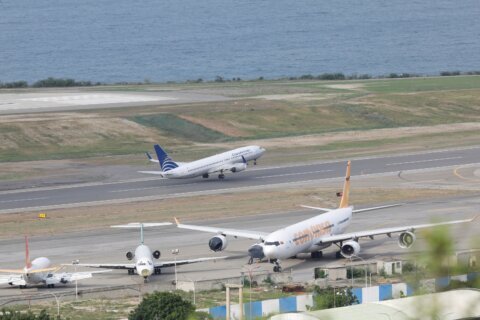RICHMOND, Va. — Before Patriots Head Coach Bill Belichick took to the podium at Redskins training camp Tuesday afternoon, two other men spoke to the media on hand: Richmond Mayor Dwight C. Jones and Virginia Governor Terry McAuliffe took turns leading the charge of goodwill, touting the partnership between Richmond and the Redskins in building their new training camp facility last year and the economic impact it supposedly had on the city.
When the Washington Redskins built the Bon Secours Training Center in Richmond in 2013, they did so with the promise of bringing a state-of-the-art facility to Virginia’s capital city, one that would serve as an engine of economic growth to the tune of $8 million per year in increased revenue. The center was built on a 17-acre site of donated state land.
The website boasts that the new center broke the NFL record for training camp attendance in its first year, drawing more than 165,000 fans. But it also sells the complex as a “sports medicine rehabilitation and men’s health center throughout the year.” As of now, the entire second floor remains empty. Lease revenues from tenants would help the economic prospects, but they don’t yet exist.
Meanwhile, a closer look at the study — conducted by The Center for Sports Leadership at VCU — reveals that unique adult attendance over last year’s camp was roughly 41,000, with just 25,000 of those coming from outside of the Richmond Metropolitan Statistical Area. The average adult attendee spending was $357.81, according to the study.
Some quick math shows us that this would bring roughly $9 million of economic infusion into the area. Of course, not all of that money is going directly into the local economy. Those numbers included spending at local hotels and restaurants, but also within the gates at Bon Secours, on merchandise and food, which made up a significant percentage of the haul.
Specifically, it makes up 15.2 percent ($135.14 of $887.89) of the expenses for non-locals who stay overnight, 40.6 percent ($85.40 of $210.40) for those who come in for the day and 45.6 percent ($88.34 of $193.77) for locals. That’s a good chunk of money going not into the local economy but back to the club.
And because the Ashburn-based Redskins kept 45.6 percent of local money spent last year, one could ostensibly subtract that from the total supposedly invested in the Richmond economy.
As for the businesses outside the gates, some felt a swell of business last year, but are not getting the same bump in 2014. Gus’ Bar & Grill, just up the block and across the street from camp, was the place to be in 2013, bringing in up to four times the average crowd during training camp.
“Every day we would have a full restaurant,” says General Manager Meghan McClure. “Every seat at the bar, every table on the floor, all the patio tables would be sat.”
Fans
␎ 
Fans have turned out in record numbers, but the gravity of their impact on the local economy remains in question. (WTOP/Noah Frank)
Expecting a similar boom, McClure planned for a similar crowd, but has not seen it thus far. The Patriots’ visit this week has helped a little bit, but they’re still not nearly on the same level. She attributes part of the lag to a change in timing of practices and walk-throughs, which have changed this year, not allowing for the same natural lunchtime window for fans to search for close eats.
“I think the first four days of camp, we had maybe 70 people worth of training camp overflow, where we would have had that in the first 45 minutes last year,” she explains.
This year, local food trucks were offered the chance to operate inside the gates. But they were charged $5,000 by the team for the privilege, with only 15 actual days of camp to try to make that money back and turn any kind of a gross profit, much less a net one. And all that money got them was a space inside — no added publicity from the team.
“After the astronomical buy-in that they have to have, I would imagine that there would be something to help them in their sales,” says McClure, who says a friend ponied up the fee to be on the inside. “And what I got from him is that no, there’s not a whole lot of people, not a lot going on. We’re not seeing anything.”
Just on the other side of the train tracks sits The Diamond, the aging home of the Richmond Flying Squirrels and VCU Baseball. The 30-year-old facility was built for the Richmond Braves, who left town in 2008 after the city would not approve a new stadium deal. The Flying Squirrels, who have been in negotiations for a new home ever since arriving, are now in their fifth year at The Diamond.
The Flying Squirrels draw well already, but can only be helped by a successful Redskins stay in their new Richmond home. So far, attendance totals haven’t been appreciably better or worse, especially considering the small sample size of dates in which the Redskins have been at camp while the Flying Squirrels are in town. But the team has seen a spillover in bits and pieces.
“As our relationship with the Redskins continues to evolve







